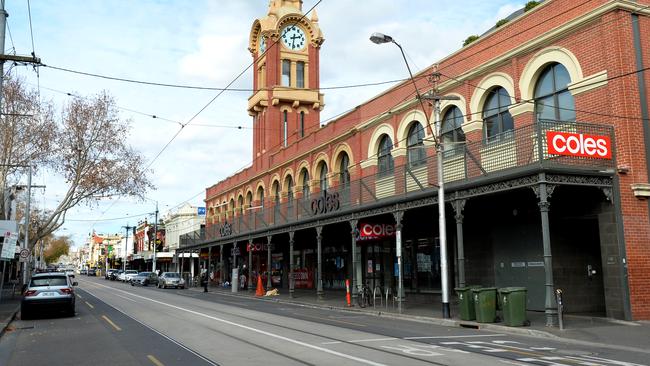
That’s not to say every element of the lockdown is necessary – the effort to get the biggest hit on the virus at the lowest cost is always a wicked problem requiring exquisite judgment.
But all over the world, jurisdictions are dealing with vicious second waves of the virus, or first waves that were never contained, or spot outbreaks requiring the most rapid, assiduous response.
The lessons from international experience are: if possible, don’t let the virus visit you in the first place; if it gets in, smash it hard and early so that you regain control quickly and at a low level of infection; once you’ve regained control, don’t let it run away a second time, or the consequences are disastrous.
The two continents hit hardest so far are Europe and Latin America. Both, as well as the US, are back battling new problems.
In Britain, which still has one of the highest COVID death rates per head of population, four million people in the north are effectively under complete lockdown. Boris Johnson paused further easing of restrictions nationwide.
He has flagged clear signs of a second wave in Europe and required anyone coming from Spain to undergo a fortnight’s quarantine.
The dangers of a big second wave in Britain itself are enormous. Its hospitals are normally full in winter anyway. If it goes into a second wave with a relatively high baseload of COVID cases and a big winter season of flu and similar ailments, not to mention an impoverished and psychologically exhausted population, it faces overwhelming its health system, and/or the catastrophic cost of a full second lockdown.
But there are new outbreaks across Europe, in Spain, Belgium, France, Germany and the Balkans. These have led to new restrictions.
The situation in Latin America continues to get worse with Brazil registering the second-highest number of deaths, after the US, and Mexico now surpassing Britain to have the third-highest number of COVID fatalities.
The number of new cases worldwide, now 18.5 million, is still rising by 300,000-odd a day. That accelerated through July. It’s unclear whether it’s now a peak, or a new plateau with more rises to come.
The US has recorded its sixth day of more than 1000 deaths. Dr Deborah Birx, Donald Trump’s coronavirus co-ordinator, warns the virus in the US is much more dangerous than during the first wave in March and April.
There is much more COVID in the US now than then; it is much more widespread, it is rural as well as urban. Florida’s Governor, Republican Ron DeSantis, is desperate to get the economy moving. But many local authorities in Florida have closed restaurants and schools.
Republican governors in Arizona, Indiana, Ohio, Arkansas and Alabama have taken hard measures, closing many businesses and in many cases mandating the public wearing of masks.
But Democrat-ruled California now has the biggest caseload, with more than 500,000 infections.
Some countries have blatantly lied about their results.
The BBC obtained Iranian government documents that show its real, recorded COVID fatality number is about 45,000, more than three times its official number. Indonesia is massively under-reporting cases and deaths because it has such minuscule testing capacity. The virus appears out of control in parts of India with 1.8 million cases and nearly 40,000 deaths. The Philippines has just set its largest daily new cases record and announced a lockdown for greater Manila.
There are hard lessons in all this for Victoria and Australia.
First, a few countries such as Taiwan and Vietnam dodged the first round through proactive public policy and wide compliance with social distancing.
They have been extremely alert and energetic to respond to any new outbreak, isolate it, check contacts and where necessary shut down a facility or a locality.
Countries such as Singapore, which had the virus beaten but then found it came back through an unforeseen vulnerability, had to swing into heavy suppression measures a second time to regain control.
But the big lesson from Europe, the US and Latin America is that the virus never goes away. Before a vaccine, there is no “other side”, just suppression and constant vigilance. The nonsense doctrine of herd immunity has been applied and has worked precisely nowhere.
Instead the old, pre-vaccination pattern of pandemics reasserts itself – disastrous outbreak, a lot of deaths, panic-induced extreme social isolation, relative calm, relaxation of the rules, community complacency and then the whole ugly cycle starts again.
Until a vaccine comes along there almost certainly needs to be permanent changes in lifestyle and social organisation – conscientious handwashing, serious social distancing, and masks, if not everywhere then certainly in shops and public transport.
Masks do offer some limited protection to the wearer but they offer big benefits to society, making transmission less likely.
Until a vaccine comes, they need to remain part of life. Wearing a mask is no more an infringement of civil liberties than seatbelts or bicycle helmets.
The Victorian pattern has been cruel – a strong lockdown, followed by five minutes of normality and then a new, huge outbreak necessitating even tougher lockdown.
There is no business-as-usual option because that leads to a huge, exponentially growing outbreak, which would in turn lead to unacceptable death levels and an overwhelmed health system.
The only solution is to get virus rates down very low and then ruthlessly and immediately suppress any spot outbreaks.
That means virtually no international visitors without effective quarantine, until we get a vaccine.
We may one day become too poor to fight COVID. Until then, society will never accept the level of deaths a permissive strategy would occasion.
Therefore, the only way forward is to get the thing under control as quickly as possible by whatever means are necessary. Then make sure we never let it out of control again.




The state of emergency and extreme lockdown in Victoria is the right strategy for this horrible moment in the fight against COVID-19, and consistent with all international evidence.